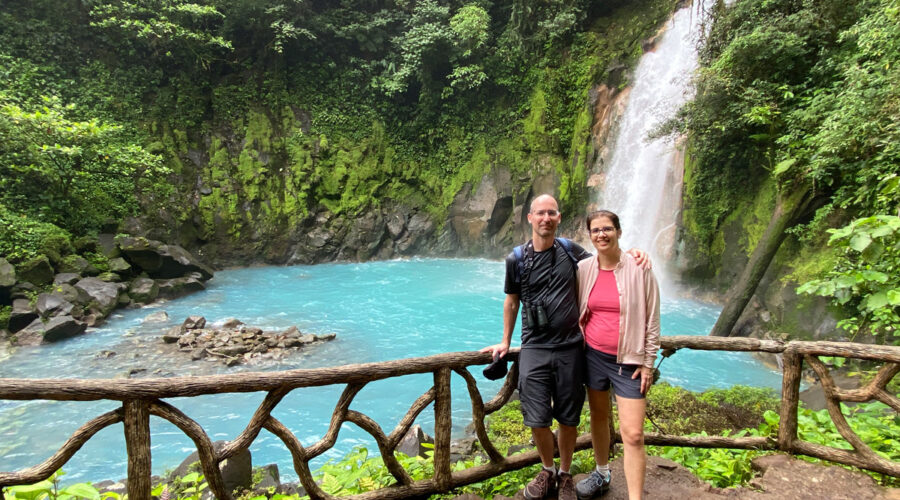Rio Celeste Waterfall & Trail (Step-by-Step Guide)
Let me show you step by step the 3-mile trail to the Rio Celeste waterfall, a natural wonder celebrated for its unrealistic turquoise hue. The trek to it in Tenorio Volcano National Park can be comfortably completed in about 1.5 to 2 hours, especially if you take your time to take photos and pause to absorb the sights.
Before you set off, here is something important to note: the waterfall’s signature sky-blue color isn’t always visible. After periods of heavy rain, the vibrant blue disappears. Though the waterfall remains beautiful, it will appear more ordinary.
QUICK GUIDE
- Save 80% on flights -> FareDrop – check out all Costa Rica airports
- Useful guides → Best time to visit Costa Rica
- Where to stay → The most sustainable eco-lodges
- Activities → Eco-tourism in Costa Rica
- Shuttles and buses → Check prices
- By car → Sightseeing shuttle with local drivers
Intro to Tenorio Volcano National Park
Tenorio Volcano National Park was established in 1976, but the volcano was only added in 1995. Its area is almost 32,000 acres and lies at the border of the province Alajuela (Upala and Guatuso cantons) and Guanacaste (Canas and Tilarán cantons). It is part of the UNESCO’s Agua y Paz Biosphere Reserve since September 2007.
The main attraction is the stunning Rio Celeste waterfall, one of Costa Rica’s popular waterfalls. But don’t stop there! I recommend to keep walking to finish the whole 3-mile trail back and forth. There are plenty more sights to see and explore. Walking through a primary rainforest is always an adventure worth having on its own.
According to the Park’s information board the Park is home to 540 bird, 72 mammal, 27 amphibian, 52 reptiles, 3690 plant, 534 mushroom, and 6024 insect species. To identify them properly, you need a knowledgeable guide with you. If you don’t have one, just enjoy the trail and the sights.
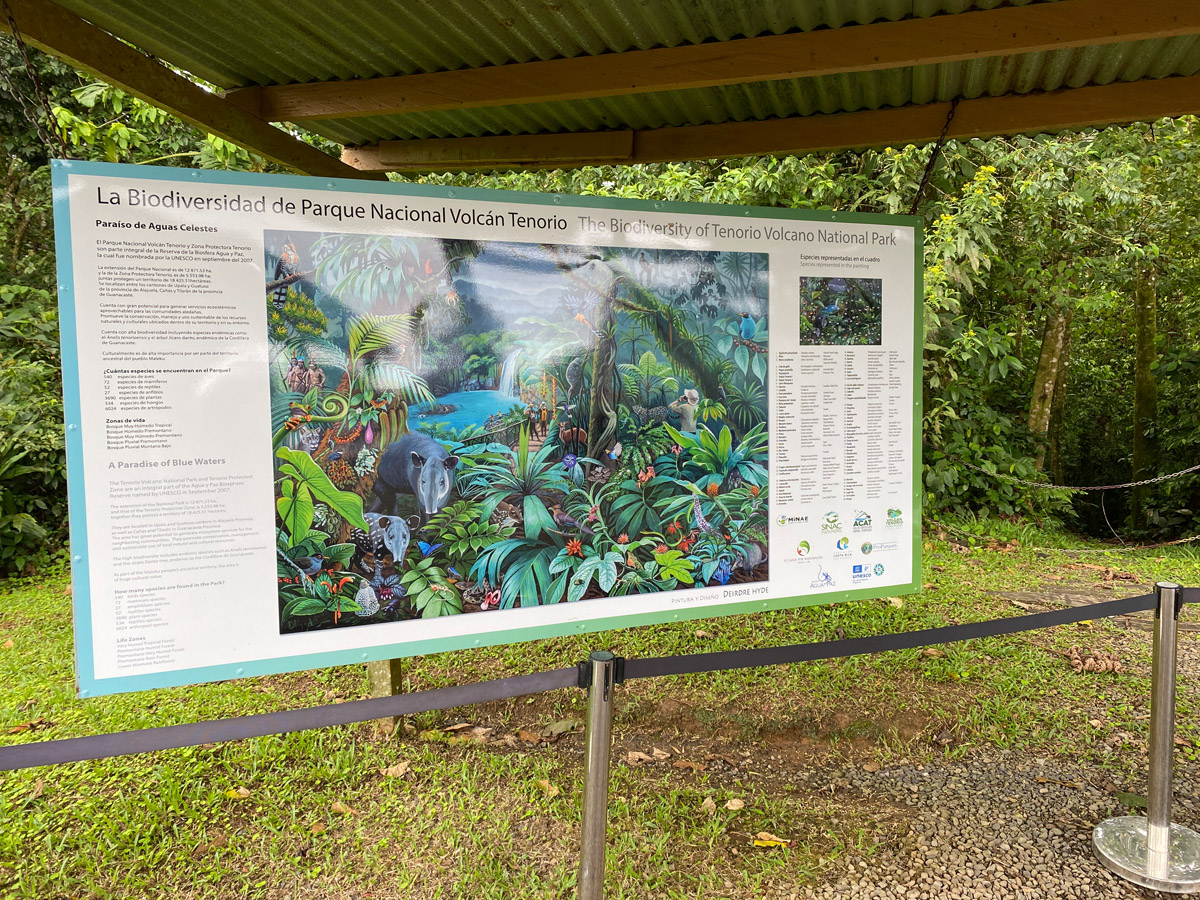
Trail map
I call the ‘Mysteries of Tenorio’ trail moderate and not easy only because there are 254 steps (yes, I personally counted them) that take you down to the waterfall and back up. Apart from that, the trail is generally easy to navigate and flat.
Although the map at the park’s entrance shows signs of wear over time, the path is still visible. The trail is straightforward, running directly to its end without any loops or intersections with other trails.
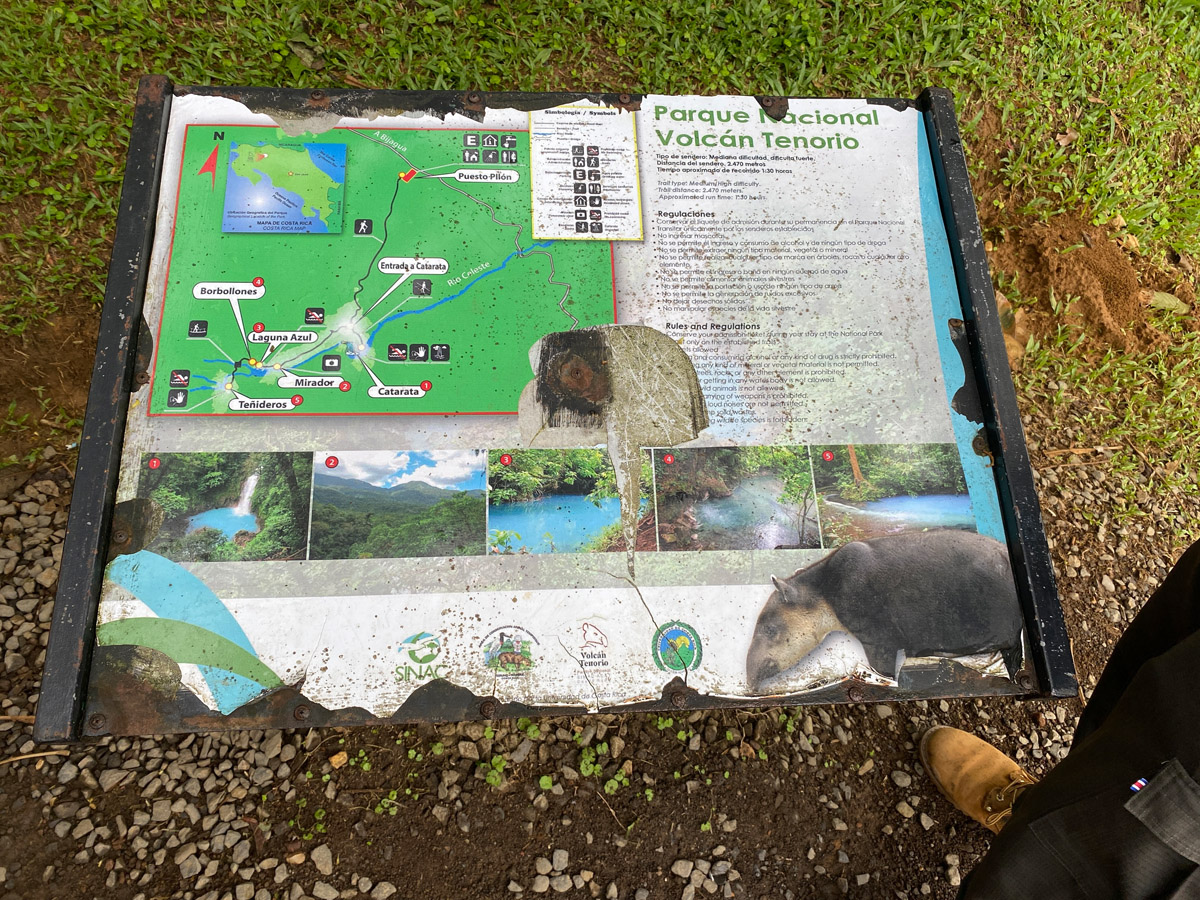
The first half
Even on a hot day, the moment you step onto the trail, the cool embrace of the rainforest surrounds you. The path starts off paved and wide, occasionally crossed by small wooden bridges over tiny creeks.
The air is alive with the sounds of crickets or similar insects, and bird calls fill the canopy. We caught a glimpse of a yellow-throated toucan, though we found ourselves much closer to Costa Rican birds when we stayed at Origins Lodge in Upala.
If you have never visited a tropical rainforest and have only seen them in documentaries, let me assure you, it looks exactly as you would imagine. Moss-covered trees, a dense canopy overhead, winding vines, and the earth beneath your feet, moist or damp.

Catarata (Rio Celeste Waterfall)
About halfway through, or one mile in, the trail maintains this character. Yet, as you draw closer to the waterfall, the unmistakable sound of water cascading from a great height begins to fill the air. At the signpost take 254 steps down and you arrived to the main attraction.

In the photo above, you’ll notice there are only a few people around. This is thanks to our local guide’s advice to get there early in the morning. An excellent tip, as it turned out. It allowed us undisturbed views of the waterfall and a peaceful experience on the rest of the trail.
We came here in February, right in the middle of the dry season, and the color was unreal, absolutely mesmerizing. However, if you are planning to see the waterfall or explore the park after heavy rains, you might be disappointed because the stunning color tends to disappear.
When you have time to stop gaping, close your mouth and catch your breath. You need to climb back up the stairs to continue your journey.

Mirador (Viewpoint)
The next stop on the trail is the ‘Mirador,’ also known as the viewpoint, where you can see the Tenorio Volcano One and Two, and Cerro Montezuma. This section of the trail, stretching about 0.3 miles, becomes rockier and narrower. Should you visit during or after rain, anticipate muddy and sticky conditions. Wear hiking boots to have a comfortable walk.
Given that the summit of Tenorio Volcano is a cloud forest, it is quite common to see it covered in clouds. That is actually for the best. Our guide explained that the clouds are essential, as the high humidity they provide is crucial for the local flora and fauna to flourish. So, if you find it like on the below photo, don’t be disappointed. It is natural and necessary.

Laguna Azul (Blue lagoon)
After crossing a bridge and navigating a few turns, you will reach the blue lagoon. Its waters are incredibly inviting. Yet, unfortunately, swimming is not permitted.
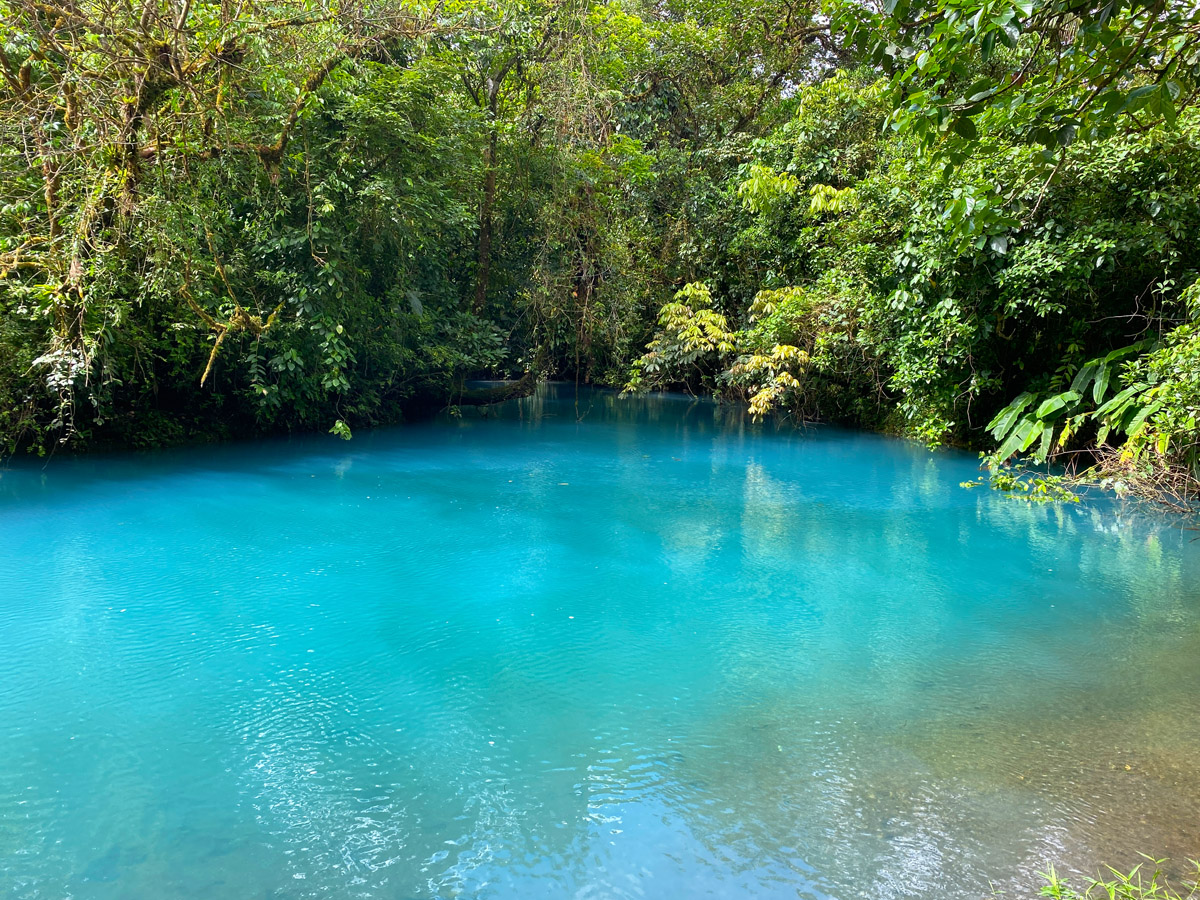
Borbollones (Hot springs)
As you move away from the lagoon, a smell reminiscent of rotten eggs begins to penetrate the air. This is actually sulfur, the sign of an active volcanic region. Indeed, Tenorio Volcano is active, though our guide mentioned its last eruption occurred over 200 years ago. It is believed that the volcano releases pressure through the fumaroles and hot springs, essentially preventing eruptions.

El Teñidero (Dying place)
The trail culminates at a spot where two seemingly ordinary rivers, Rio Buenavista and Quebrada Agria, converge. An information board there explains this remarkable natural phenomenon. Since there is a change in pH, the size of aluminosilicates (mineral particles in the water) increases from 184 nanometers to 570 nanometers. The result is a sky-blue color because the sunlight is reflected differently off the enlarged particles. It is called mie scattering. Quite fascinating, isn’t it?
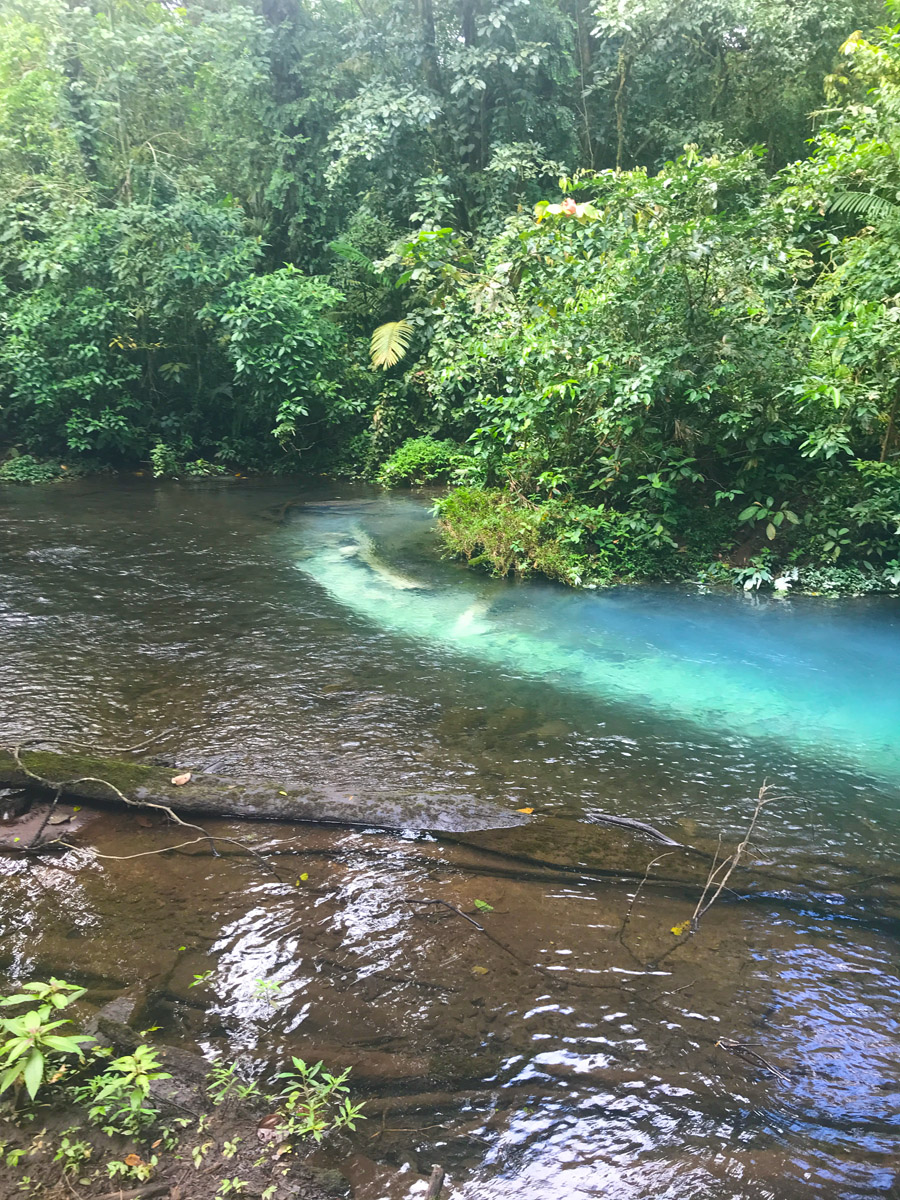
Reviews and testimonials
I asked around to see what was the experiences of other travelers were. Here is what they have to say about visiting Rio Celeste:
Marjolein Dilven, Spark Nomad
We were so excited to visit Rio Celeste since we have seen it so many times on Instagram! I loved the mythology of Rio Celeste and could believe a god cleaned his paintbrush in that aqua-blue water as they painted the sky. The mud was so intense that it should have had an origin story about a spiteful earth spirit jealous of the water that wanted to keep people from ever reaching the falls.
I went in the spring, right after the winter rains, and the mud was so deep it threatened to eat our shoes with every step. That said, we were thrilled to make it to the falls, and even more thrilled to make it back to the parking lot! Unfortunately we did wind up sacrificing a pair of Chacos to the mud, lol!
Claudia Tavani, My Adventures Across The World
One of the most important tips for anyone visiting Rio Celeste during the rainy season is to dress accordingly. Regardless of the season, your packing list for Costa Rica should include a good rain jacket that protects you in case of heavy rain.
While there are spots along the trail where trees will provide some sort of shelter, as you approach the waterfall there is no shelter at all so you may get soaked unless you are wearing a rain jacket.
Opt for a light, breathable, easy to pack jacket. Or for cheaper alternative buy a rain poncho. Many stores in Costa Rica sell them for around USD $5 or $6. They are never durable, but if you are traveling on a budget it remains a good option.
Victoria Heinz, Guide Your Travel
If you don’t want to worry about planning your trip to the Rio Celeste Waterfall, you should join a guided tour instead, which takes a lot of stress out of the day.
I went with the the Rio Celeste Full-Day Tour From La Fortuna. It was a fantastic choice. We were picked up at our hotel in La Fortuna and driven to the starting point. From there, we went on a four-hour hike, lunch included. Two years ago swimming was allowed and it was so refreshing.
Overall, this tour was a great experience and worth it. The hike is also manageable for most fitness levels.
Practical information
How to get there
If you are coming from the South, which you likely are, follow Road 6 until Bijuaga. There will be a sign saying Tenorio Volcano National Park. Turn right and follow the road to the parking lot in front of the entrance. This last leg of your journey will be about 5.5 miles on dirt road.
Opening times
The National Park opens at 8 a.m. and closes at 2 p.m, but they let you stay in the Park until 4 p.m.
Entrance and parking fee
The fee to enter the National Park is USD $12 for non-residents and ¢ 800 for Costa Rican nationals (2024 data). No pets are allowed. The entrance to the park is limited, allowing only 200 visitors every hour.
However, August 24 is the National Day of Parks, when admission is free for all visitors. Additionally, residents and nationals can enjoy free admission on Wednesdays every month. You still have to book your entry ticket though.
So, if you are thinking of exploring the park and waterfall on your own, you have to book your entry ticket in advance. You will need to pick a time slot for when you want to visit, and make sure you arrive within the 40-minute window they give you for entry.
If you are arrive by car, you need to pay a ¢ 2,000 (USD $4) parking fee (2024 data).
If you are on a guided tour, the company will take care of the booking, paying the entry and parking fees, and making sure you arrive on time.
Facilities
At the National Park’s entrance, you will find a simple yet clean bathroom and toilet available for use. There is nothing inside the Park.
Nearby, there are stalls offering drinks, fruits and street food. You are allowed to bring food and drinks into the Park, but please remember to leave no trace and take your trash back with you.
After your visit, take some time to check out the souvenir shops located right across the road from the parking lot. They offer a wide selection, from coffee, chocolate, jewellery to stuffed animals.
Best time to visit
Costa Rica albeit a small country, it has four different climates. Tenorio National Park as well as Rio Celeste waterfall falls within the tropical rainforest climate zone. Here the dry season spans from mid-December to mid-April.
For the best experience, I recommend visiting during the dry or shoulder seasons. Although it might get hot, the canopy will shield you from the sun.
Opting to visit during the rainy season could leave you disappointed. Heavy rains can cause the waterfall to lose its mesmerizing color, reverting it to a more ordinary hue.
Where to stay
I recommend staying in eco-lodges that are accommodations in undisturbed, remote natural areas where both construction and operation have the lowest impact possible on the environment. They are not only part of the local community, but they are active participants in protecting nature and culturally sensitive areas.
The closest eco-lodge to Tenorio National Park is Hideaway Rio Celeste. It is located right by the entrance. It is a luxury eco-lodge with focus not only on comfort but on sustainability as well. Since you did not have a chance to swim along the trail, this eco-lodge offers guided hiking and adventure tours along Rio Celeste.

Origins Lodge is approx. 45 minutes away. It is worth the trip to stay there since the lodge has an amazing 180 degrees view of the lowlands as far as the border of Nicaragua and beyond. Its garden is the paradise for birds and bird lovers since they are flying right in front of you 24/7.
READ ON – How to Spend the Best 4 Days in Origins Lodge
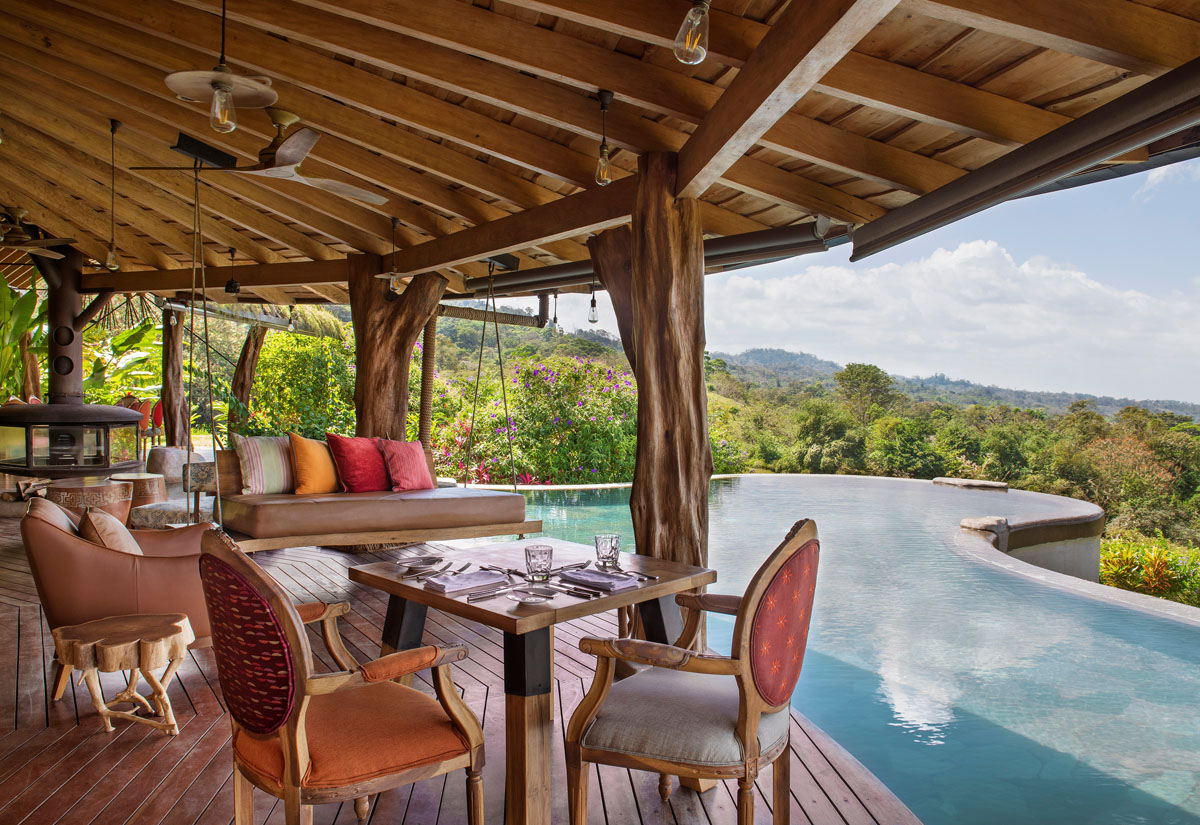
More about Costa Rica
Emese Maczko is a travel blogger behind Eco Lodges Anywhere. Having explored several destinations around Europe, the US, Indonesia, and Australia, and resided in Germany, the United Kingdom, and Luxembourg, Emese possesses a keen understanding of diverse cultures and an appreciation for the beauty of each destination she visits. She advocates for sustainable travel and ecotourism.

